

Home | Call for Papers | Submissions | Journal Info | Links |
Journal of the Slovene Association of LSP Teachers
ISSN: 1854-
Alejandro Curado Fuentes and Juan Enrique Agudo Garzón
Oral Development for LSP via Open Source Tools
ABSTRACT
For the development of oral abilities in LSP, few computer-
Keywords: oral skills, Moodle, resources, LSP tasks, blended course.
1. Introduction
Teaching and learning LSP (Languages for Specific Purposes) via different types of
computer-
In our own institution, (see AVUEX in the bibliography for web reference), a combination
of autonomous and collaborative learning is the chief goal, i.e., to be able to develop
electronic means of communication along with traditional face-
The nature itself of computer-
Undoubtedly, computers are fast becoming prevalent at all educational levels and
across a wide scale of teaching modalities, ranging from face-
This paper describes a blend of individual and collaborative learning procedures
though the implementation of a combined set of online activities and tools. These
resources go hand in hand with traditional face-
2. Specific oral skills as goal
Graf and List (2005), among others, evaluate the use of information technologies for educational settings, reaching different conclusions that tend to underline the essentially pedagogical scope in which researchers must act to promote technological integration within the curriculum. One premise considered is that oral skills have traditionally been left out when applying technologies to FL curricula. Also, a potential gap is generally perceived in terms of the few existing tools that allow for real dynamic interactivity, and without this key feature, motivation for oral communication often diminishes.
Because oral skills are a chief target in any FL program, their exclusion from a
fully operative online system weakens the overall effectiveness of the program. In
the different oral dimensions of LSP communication (e.g., academic, occupational,
social, etc), the range of possible levels for oral exploitation may include linguistic
acquisition of phonemes and sounds, word constructions and phrases within given statements
and sentences, or the enactment of identity roles by means of discursive strategies,
socio-
The need to communicate orally, intrinsic in all human interactions, should naturally
find effective means in the digital world, and should be realised by means of truly
interactive tools that enable dynamic communicative exchanges. The fact is that oral
communication in LSP goes beyond reading/writing practise or vocabulary acquisition;
it includes, among other aspects, learners´ needs to participate by transforming
their linguistic/content knowledge into specific communicative acts, such as workplace
discourse (cf. Koester, 2006). In other words, the design of specific contents on-
For oral media-
For the oral development of collaborative tasks, as Carter (2004: 165) states, a
type of socio-
The communicative focus constitutes the basis for this LSP teaching/learning process.
It should lead to a holistic scope of learning by means of both micro/macro skills
and specific tasks (e.g., task-
3. Multimedia resources and cases for oral LSP development
In general, pedagogical effectiveness may derive from the computer-
The possibilities opened up by the tools to access real communication contexts, even
interaction between native and non-
The following resources and tools are categorised according to their potential attractiveness and motivation for oral communicative and linguistic skills. In addition, some cases are briefly explained in the LSP classroom and blended courses where such media demonstrate significant learning conditions.
3.1 Visual appeal for oral comprehension and production
Multimedia filter. This filter can embed links to enable audio files, video, and
Flash-
Multimovie filter and block. This feature also enables the insertion of videos from
different web providers (youtube.com, google video, metacafe.com, etc) within any
web page in an easy manner. In this way, we can access a huge amount of audio-
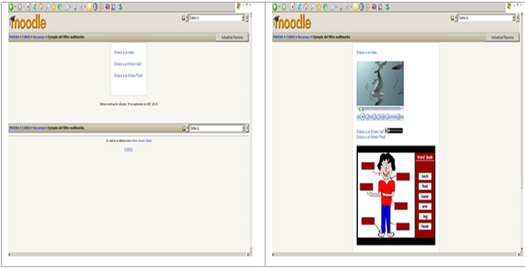
Figure 1. The multimedia filter activation (on the right) versus its default non-
The inclusion of the multimedia and multimovie filters favours the direct interaction
with the output from the platform. In our second year Computer English course, the
blended course material contains many examples of the use of such filters. These
activities are provided with five-
3.2 A focus on oral comprehension
Podcast. The concept of podcasting refers to the creation of sound files for their distribution by means of RSS files, which enables subscribed users to download and play them according to specific interests and needs. The files can be either listened to directly from the web (Figure 2) or downloaded on the PC by using applications such as iTunes or even saved on portable/mobile devices (e.g., iPod).
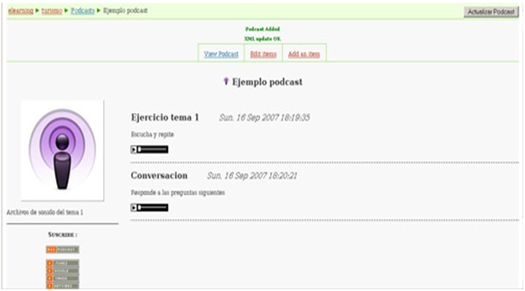
Figure 2. Interface for a podcasting activity.
SCORM module. A SCORM package is a web block made up of material according to the SCORM (Sharable Content Object Reference Model) standard for learning objects. These packages can contain web pages, graphics, Javascript programs, Flash presentations, or any other application to be functional with a web browser. This SCORM module enables the easy uploading of any standard SCORM package created with an external tool so that it can be made suitable content for a given course. The package can be used for the exchange of content among different platforms.
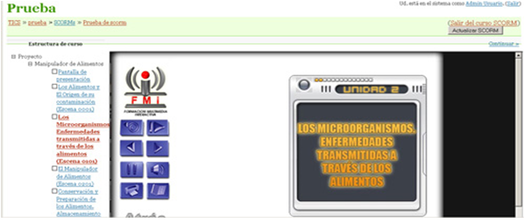
Figure 3. Example of SCORM activity
The use of podcast and SCORM packages in the blended course can improve oral comprehension
skills. These modules can be exploited in the case of theoretical background comprehension.
An example is our third year Telecommunications English course, in which a long lecture
about quantum physics can be provided as part of a larger lesson in a SCORM package.
The lecture integrated in the lesson originally comes from the Michigan Corpus of
Academic Spoken English (MICASE, freely available on the web). The advantage is that,
together with the lecture, the transcript can be downloaded and added to the lesson.
As part of the oral comprehension task, a home-
3.3 Direct oral interaction
MoodleSpeex voice recording tool. This module allows for the recording of digital
oral messages via tools that can be integrated in discussion forums. The main purpose
is to enable the recording of voice for information to be administered by the teacher
(as a prompt message) and followed by students (who, for example, respond to the
message left by the teacher or by other students). The development is thus similar
to that of a standard writing forum, with the difference that, upon choosing the
mode for communication, the audio feature can be selected and, instead of a text
box, a small sound recorder will show up (Figure 4), allowing for voice recording.
The messages are stored in SPX form and can be listened to directly from the platform.
Both the sound recorder and player are implemented by means of Java applets (i.e.,
the JAVA plug-
Audio/Video Conferencing and Recording of Audio for Evaluation modules. The COVCELL project (see the bibliography) is developing different tools for online FL teaching and learning via Moodle, allowing for oral communication among any potential users to set up conversations by using videochats.
Recording of Audio for Evaluation deals with the recording and capturing of students’ audio for their corresponding evaluation by the teacher. There is also the possibility of a shared whiteboard that permits graphical explanations in collaboration with the students. Although this project is currently under development, we deem its use and exploitation as important for key elements in specific communicative tasks in which learners must not only work collaboratively and orally, but also according to concrete needs for their work with LSP (e.g., to conduct field work on a specific topic related to their studies, future profession, etc). For such aims, both specific academic writing and oral skills are demanded and tested.
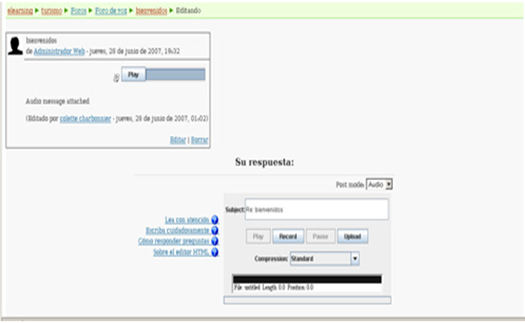
Figure 4. Interface (MoodleSpeex voice recording tool)
In our blended courses for Computer and Telecommunications English, we discuss socio-
3.4 A focus on pronunciation
Gong project. This project (see the bibliography) enables the recording and listening
of audio files by means of a Java applet (Figure 5) in a forum-
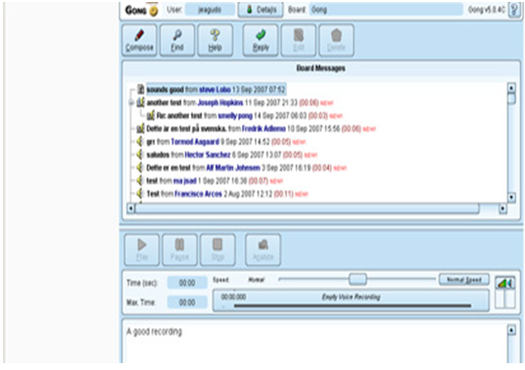
Figure 5. Gong voice board in Moodle
AIRE project. This project is currently under way at Polytechnic School of the University of Extremadura. The aim is to enable the integration of a speech recognition tool in the Moodle platform for specific task development. The tool “AIRE” has been chosen for this process (developed by the “Voice recognition group” at this centre; see the bibliography) as it adapts to file formats used with the HTK (Hidden Markov Model toolkit), especially convenient for Moodle systems (cf. Villamil Espinosa, 2005). The chief goal is to “feed” the tool a reduced number of lexical items via a voice trainer with which to be able to allow students to practise and master specific vocabulary (e.g., technical words related to their studies, academic expressions, etc). These words, if mispronounced, may cause unfortunate misunderstandings in conference paper and/or seminar audiences, etc; as a result, their direct practise on the speech recognition tool (to be implemented in the platform) is considered important for LSP courses.
3.5 Individual and collaborative oral assignments
Other resources. Finally, there are other resources in the Moodle platform that can
be exploited for oral work. One example is the option to upload videos as assignments
(a limited capacity of 50 Mbs, but can increase to 100). This task is especially
useful for seven-
Another example is the collaborative work with wikis and glossaries, where audio-
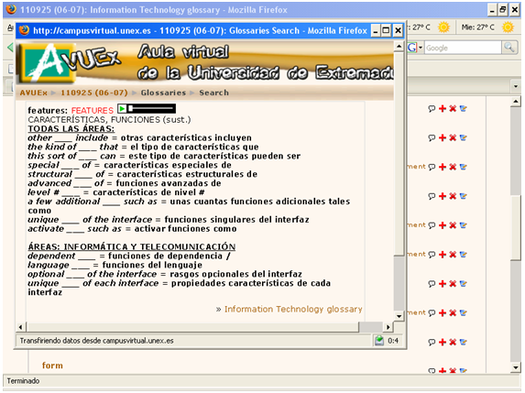
Figure 6: Glossary entries being managed and created with the aid of audio files
4. Conclusions and future developments
As observed, one can have access to various resources for oral development in Moodle.
The exploitation of both linguistic elements and discourse-
Most oral communication tools and resources are still under development, and so subject
to significant improvement. There are also technical obstacles to be overcome, such
as installation, compatibility among versions, differing browsers, etc. Other issues
to research are the mentioned features of voice recognition (e.g., computational
cost), real-
Investigating oral development for LSP in Moodle can also follow specific academic/professional requirements at the European level. The Common European Framework of Reference for Languages by the Council of Europe has established the basis for multilingual contexts in Europe where properly taxed linguistic levels/competences are made homogenous according to scales from beginner (A1) to most proficient (C2). These qualifications are required for active and effective participation in society and the labour market in traditional settings and distance/virtual environments for education and training.
Bibliography
Arvanitis, P. & P. Panagiotidis. (2007). A University E-
AVUEX (Aula Virtual de la Universidad de Extremadura). Retrieved May 15, 2009, from http://campusvirtual.unex.es.
Caballero C. & M.N. Ruiz-
Cabero, J. (2003). Principios Pedagógicos, Psicológicos y Sociológicos del Trabajo
Colaborativo: Su Proyección en la Telenseñanza. In F. Martínez and M. Prendes (Eds.),
Redes de Comunicación en la Enseñanza. Las nuevas perspectivas del trabajo colaborativo
(pp. 15-
Carter, R. (2004). Language and Creativity. The Art of Common Talk. London: Routledge.
COVCELL project. Retrieved May 9, 2009, from http://moodle.org/mod/data/view.php?d=13&rid=1191.
Cooper, A. & A. Reimann. (2003). About Face 2.0. The Essentials of Interaction Design. Indiana: Wiley Publishing.
Dudley-
Ellis R. (2004). The Study of Second Language Acquisition. Oxford: Oxford University Press.
Felix, U. (2001). The Web’s Potential for Language Learning: The Student’s Perspective.
RECALL, 13(1), 47-
Graf, S. & B. List. (2005). An Evaluation of Open Source E-
Gregg, K.R. (1989). Second Language Acquisition Theory. In S.M. Gass and J. Schachter
(Eds.), Linguistic Perspectives in Second Language Acquisition (pp. 35-
Gong project. Retrieved May 15, 2009, from http://moodle.org/mod/data/view.php?d=13&rid=1209.
Jeon-
Koester, A. (2006). Investigating Workplace Discourse. London: Routledge.
McCarthy, M. (1998). Spoken Language & Applied Linguistics. Cambridge: Cambridge University Press.
MICASE corpus. The Michigan Corpus of Academic Spoken English. http://quod.lib.umich.edu/m/micase/
Mougalian C. & A. Salazar. (2005). Moodle, the Electronic Syllabus, Lends itself to PrOCALL. Retrieved May 15, 2009, from http://faculty.miis.edu/~bcole/CALLme/page2/page9/page9.html
Swales, J. (1990). Genre Analysis: English in Academic Research Settings. Cambridge: Cambridge University Press.
Villamil Espinosa, I. (2005). Aplicaciones en Reconocimiento de Voz utilizando HTK. Unpublished Ph. Dissertation. Santa Fé de Bogotá: Pontificia Universidad Javeriana.
Voice recognition group (University of Extremadura). AIRE project. Retrieved May 15, 2009, from http://gsd.unex.es/projects/aire/index.html
Wintergest A.C., A. Decapu & M-
© 2005-
Scripta Manent Vol. 4(2)
» Contents
» A. C. Fuentes and J. E. Agudo Garzón
Oral Development for LSP via Open Source Tools
» U. Sešek
Manica Danko and Mihaela Zavašnik: English in Public Administration
Review
Previous Volumes